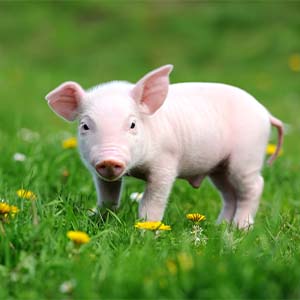Y2. Lesson 23. Practise Quadruple metre
Prior learning: Duple and Quadruple metre.
Duration: 30 minutes
Materials:
Keywords: Beat, rhythm, singing, chanting, partners, rhymes, circle games.
Difficulty: ![]()
Prepare
Present
Practise
Quadruple metre
 Melodic development
Melodic development
![]() Students investigate this classic classroom song in quadruple metre.
Students investigate this classic classroom song in quadruple metre.
- Students sing each verse of the song, having fun making the sounds of the various animals.
- Ask the class to sing the first verse and clap the rhythm.
- Ask where the strong and weak beats are to be found and what the pattern is. [strong-weak-weak-weak]
- Divide the class into two groups.
- One group will count 1-2-3-4 with an emphasis on the strong first beat and the other group will sing the first verse.
- Swap the two groups and repeat.
- Ask the class what the metre is. [4]

 Rhythmic development
Rhythmic development
![]() Students discover whether known songs are in duple or quadruple metre.
Students discover whether known songs are in duple or quadruple metre.

- Students are seated and attentive.
- Explain to the class that they are musical detectives and must discover whether a song is in 2-metre or 4-metre.
- Ask the class to sing Snail Snail and to clap the strong and weak beats.
- Ask a volunteer to come forward and sing and clap.
- Ask the class what was the pattern of strong and weak beats. [Strong-weak].
- Ask the class if the song is in 2-metre or 4-metre and why they chose the answer. [2-metre]
- Ask the class to sing Are You Sleeping and to clap the strong and weak beats.
- Ask a volunteer to come forward and sing and clap.
- Ask the class what was the pattern of strong and weak beats. [Strong-weak-weak-weak].
- Ask the class if the song is in 2-metre or 4-metre and why they chose the answer. [4-metre]
 Creative movement
Creative movement
![]() Students must follow dance and movement commands.
Students must follow dance and movement commands.

- Students arrange themselves in a large circle.
- Explain that students must follow your commands as you are now named 'Simon'.
- Whenever Simon says a dance or movement command, such as "jump to your right' students must perform the action. But only if the command starts with "Simon says..."
- If a student moves without the command preface of "Simon says..." then they are out and move to the side of the room.
- Begin with one or two commands, with and without the preface.
- Ask a volunteer to become 'Simon' and to give simple commands with and without the preface.
 Listening
Listening
![]() Students listen to and reflect on a piece of music by composer Emille Saint-Saens.
Students listen to and reflect on a piece of music by composer Emille Saint-Saens.
- Explain to the class that they will listen to a piece of music by a composer called Emille Saint-Saens. The music is from his work called Aquarium, Carnival of the Animals.
- Play the track on the audio player to seated and attentive students.
- When finished, explain The "Aquarium" conjures images of gently swaying seaweed, colourful fish gliding through the water, and sunlight on the ocean floor.
- Ask students what they wondered when they listened. Did they get a feeling of water and fish?
- Ask students if they recognised the sound of some of the instruments. Can anyone name one of the instruments?
 Visual learning
Visual learning
![]() Students discover the metre in a series of simple phrases
Students discover the metre in a series of simple phrases
- Students are seated and attentive with their notebooks ready.
- Remind students that songs can be in 2-metre or 4-metre, depending on whether the pattern is strong-weak or strong-weak-weak-weak.
- Project the graphic on the board.
- Ask students to copy the first line.
- Ask students what number should be placed before the first note and why. [2]
- Repeat the process for the next line. [2]
- Continue with the next two lines. [4]

 Instruments
Instruments
![]() Students discover how to play Teddy Bear on tuned percussion.
Students discover how to play Teddy Bear on tuned percussion.
- Distribute tuned percussion instruments. In this exercise, xylophones are chosen.
- Divide the class into two groups.
- Demonstrate the melody of the song to the first group.
- When secure, demonstrate the simple accompaniment to the second group.
- Conduct the two groups and monitor the class performance, offering gentle guidance where appropriate.
 Part work
Part work
![]() Students use a four-beat ostinato to a song in quadruple metre.
Students use a four-beat ostinato to a song in quadruple metre.
- Teach the class a clapped four-beat ostinato pattern (such as ti-ti, ti-ti, ta, ta.)
- When secure, ask the class to sing Hot Cross Buns and clap the ostinato pattern.
- Ask if the song is in 2-metre or 4-metre.
- Choose another 4-beat ostinato pattern and ask the class to repeat after you.
- The class should sing the song again with the new ostinato pattern.
 Assess
Assess
Suggested lessons
Y1. Beat II

Y1. Beat III

Y1. Beat IV

